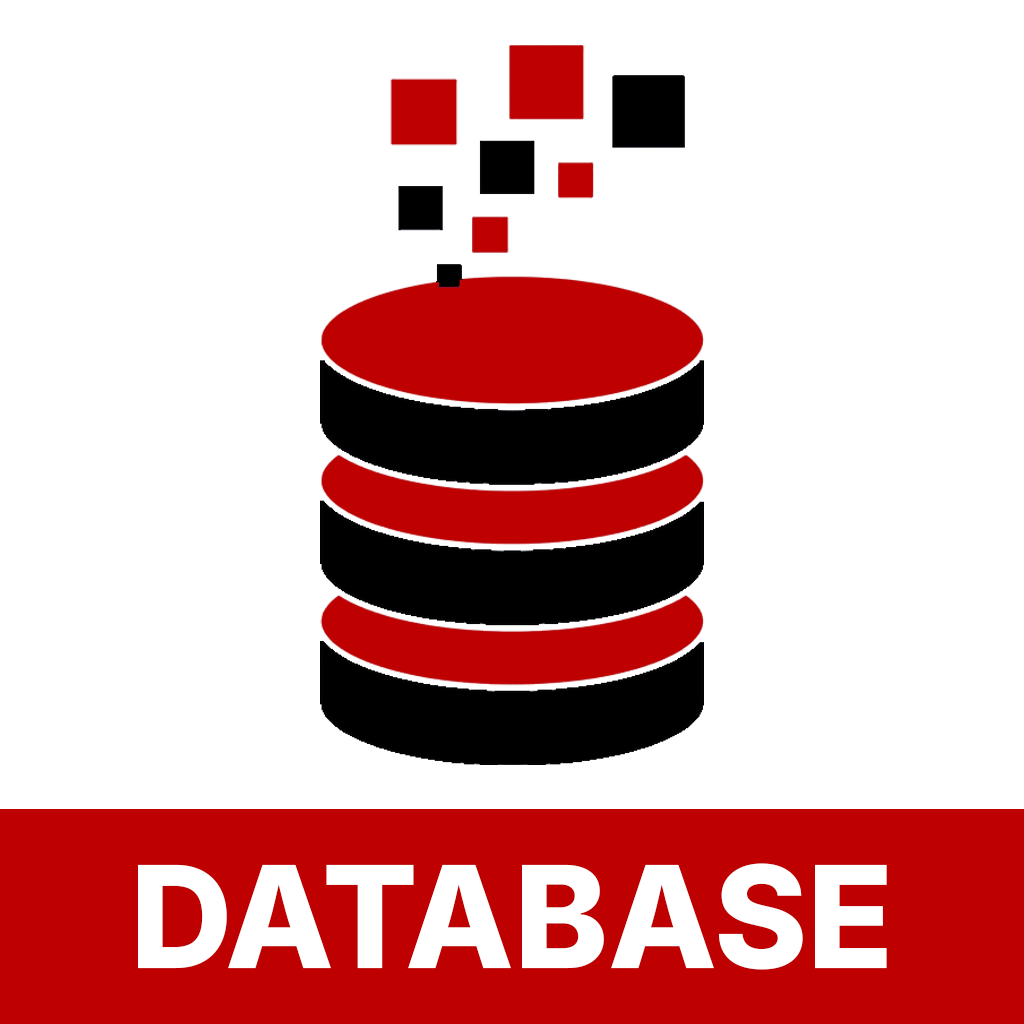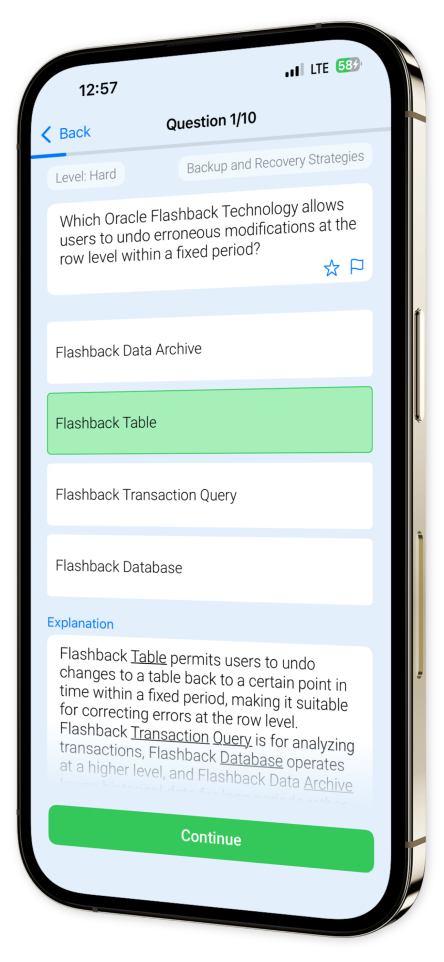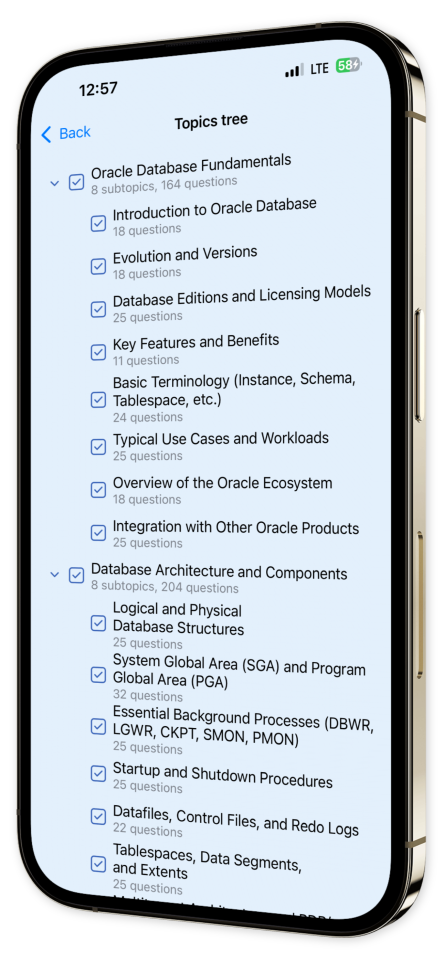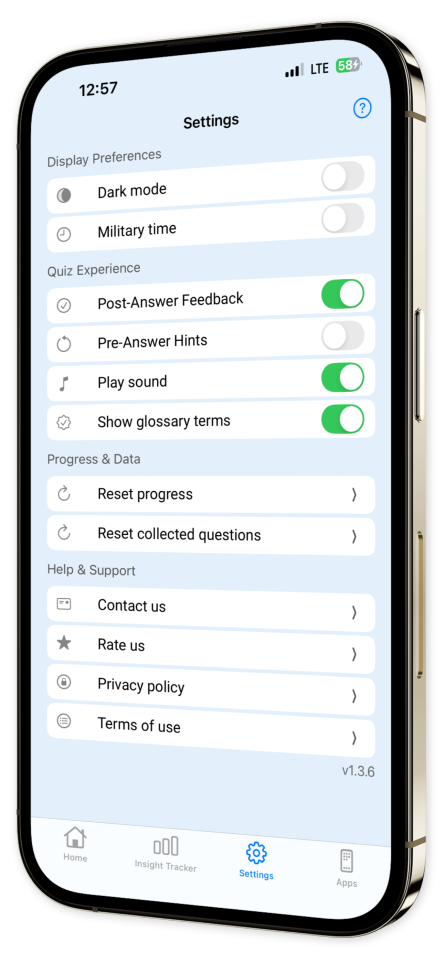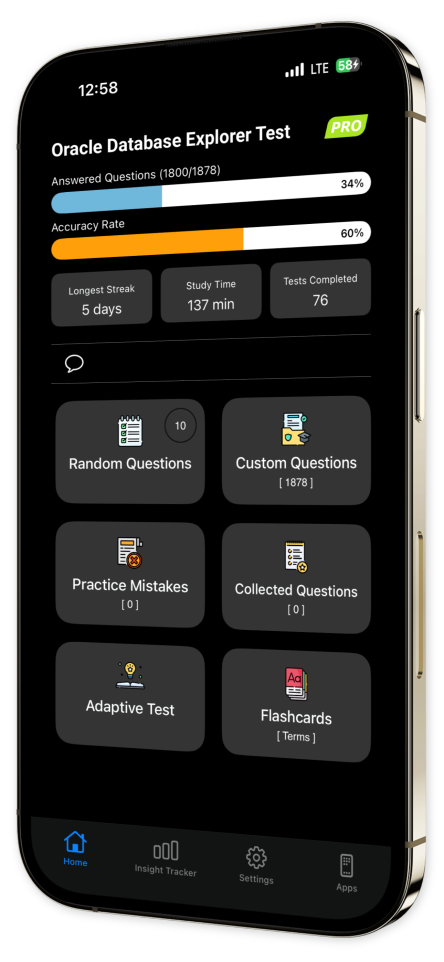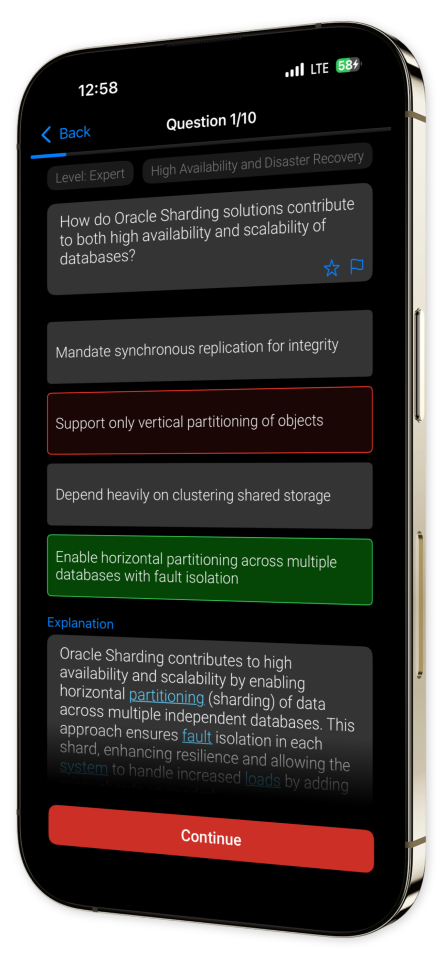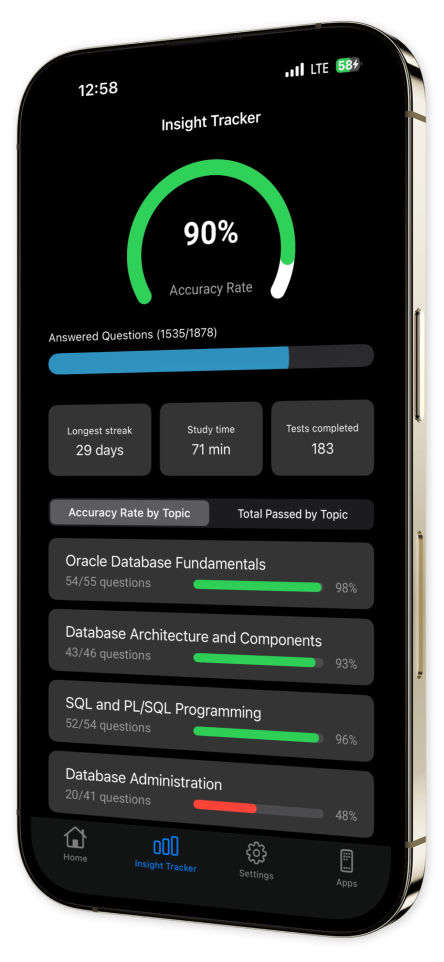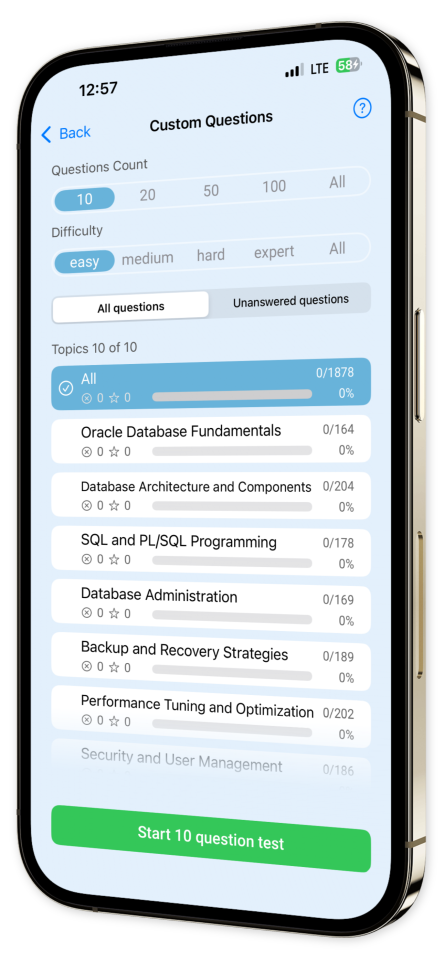
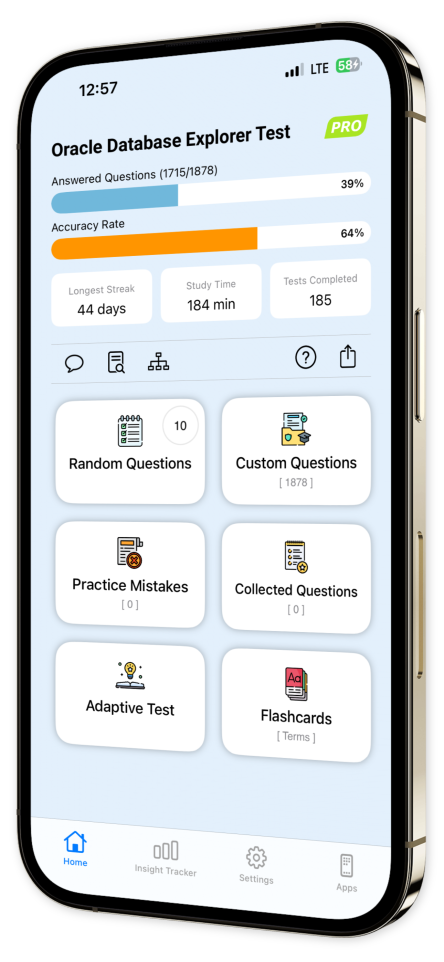
Oracle Database Explorer Test iOS
Unlock your full potential in Oracle Database certification with Oracle Database Explorer Test! Our app is meticulously crafted to transport you into a robust test environment, featuring an extensive array of practice questions designed to cover every vital aspect needed for your Oracle Database exam success.
Each question comes with a thorough explanation, ensuring you gain a deep understanding and elevate your expertise to new heights.
Key Features:
— Extensive Question Bank: Dive into a vast collection of practice questions that encompass every critical topic, ensuring you are comprehensively prepared for your Oracle Database exam.
— In-Depth Explanations: Each question is accompanied by detailed explanations, empowering you to grasp the intricacies and retain crucial information effectively.
— Customizable Quizzes: Tailor your practice sessions to your specific needs by creating personalized quizzes based on selected topics and question types, enabling targeted learning strategies.
— Progress Tracking: Monitor your growth over time with our user-friendly progress tracking tools, allowing you to identify strengths and areas for improvement.
— Offline Access: Study without limitations. Access all features and content of the app even when you're offline, perfect for preparation on the go.
— User-Friendly Interface: Navigate seamlessly with our intuitive design, letting you focus undistracted on acing your Oracle Database exam.
Download Oracle Database Explorer Test today and embark on a smarter journey to mastering your Oracle Database exam! Empower your preparation with a tool designed to enhance understanding, enable flexible learning, and optimize your study strategy.
Step into success—Oracle Database Explorer Test is your gateway to acing your Oracle certification!
Content Overview
Explore a variety of topics covered in the app.
Example questions
Let's look at some sample questions
What does the 'c' stand for in Oracle Database 12c?
CloudClusterComputeCustom
The 'c' in Oracle Database 12c stands for 'Cloud.' This version focused on providing new features to support cloud computing environments.
In Oracle's licensing models, what defines a 'Named User Plus' license?
Licenses based on database connectionsLicenses for users with access rightsLicenses based on CPU coresLicenses for public access only
A 'Named User Plus' license is assigned to each individual or device that accesses the Oracle database's software directly or indirectly. Unlike licensing models based on CPUs or specific hardware, it accounts for every person or device with access rights, regardless of actual usage.
What is the purpose of the 'Streams Pool' in the Oracle SGA?
Allocates memory for Oracle Streams processesCaches redo log entriesHolds Recovery Manager buffersStores PL/SQL execution code
The Streams Pool is a component of the Oracle SGA specifically designated to allocate memory for Oracle Streams processes. These processes handle data stream capture, propagation, and apply operations, enabling real-time data replication and diversification. It is independent of caches managed by other pools like the Library Cache or Buffer Cache.
How does setting the PCTFREE parameter affect performance?
Increases query speed by maximizing fillImproves INSERT performance with high PCTFREEPrepares blocks for future updates with high PCTFREEDirectly affects sort operations
Setting a high PCTFREE preserves more space in database blocks for future updates, which can improve performance when rows grow due to updates. This prevents row chaining and overuse of blocks during updates. It's not directly related to query speed or sort operations. Incorrect settings can impact insert operations performance due to space underutilization.
An Oracle database operates in archivelog mode. A full hot backup was performed on Sunday, and daily incremental backups were taken each evening. On Thursday morning, which backups are needed to fully recover the database to its state on Wednesday night?
Sunday's full backup and Thursday's incremental backup.Wednesday's incremental backup and the log files.Sunday's full backup, all incremental backups from Monday to Wednesday, and archived logs.Only Sunday's full backup and Wednesday's incremental backup.
In archivelog mode, to recover to Wednesday night, Sunday's full backup is required as the base. Then, apply successive incremental backups taken on Monday, Tuesday, and Wednesday. Finally, archived redo logs since the last incremental backup prevent data loss from any unarchived changes. Option 2 skips earlier incrementals, rendering recovery incomplete.
Which strategy is used to minimize data loss in a point-in-time recovery scenario?
Frequent backups with incremental level 1.Using flashback database features.Periodic export of critical tables.Increasing the frequency of redo log switches.
To minimize data loss in a point-in-time recovery, using the flashback database features is effective. Flashback allows you to rewind a database to a specific time, reducing the data loss typically associated with traditional recovery methods. Regular configuration and use of flashback logs facilitate quick recoveries with minimal data loss.
Which protocol is commonly used for encrypting data in transit in Oracle Database environments?
HTTPFTPSSL/TLSSMTP
SSL/TLS is a widely-used protocol for secure data transmission, ensuring that data is encrypted and protected against interception while in transit.
What is the primary purpose of Oracle Data Guard in the context of high availability?
To enhance database performanceTo provide data backupTo ensure data availability during outagesTo improve query speed
Oracle Data Guard primarily ensures data availability during planned and unplanned outages by maintaining standby databases. It is not primarily aimed at enhancing performance or improving speed, but rather providing a failover solution for continuity.
Which component is responsible for transmitting redo data to standby databases in Data Guard?
LGWRARCHFALDBWR
In Oracle Data Guard, the LGWR (Log Writer) process is responsible for transmitting redo data to the standby databases. This process ensures the constant flow of redo data, which helps in keeping the standby databases synchronized with the primary. Therefore, option 0 (LGWR) is the correct answer.
How do you describe a table structure in SQL*Plus?
DESCRIBE table_nameSHOW table_nameDEFINE table_nameTABLEINFO table_name
To display the structure of a table in SQL*Plus, use the 'DESCRIBE table_name' command. Alternatives like 'SHOW table_name', 'DEFINE table_name', and 'TABLEINFO table_name' do not produce the correct output in SQL*Plus.
